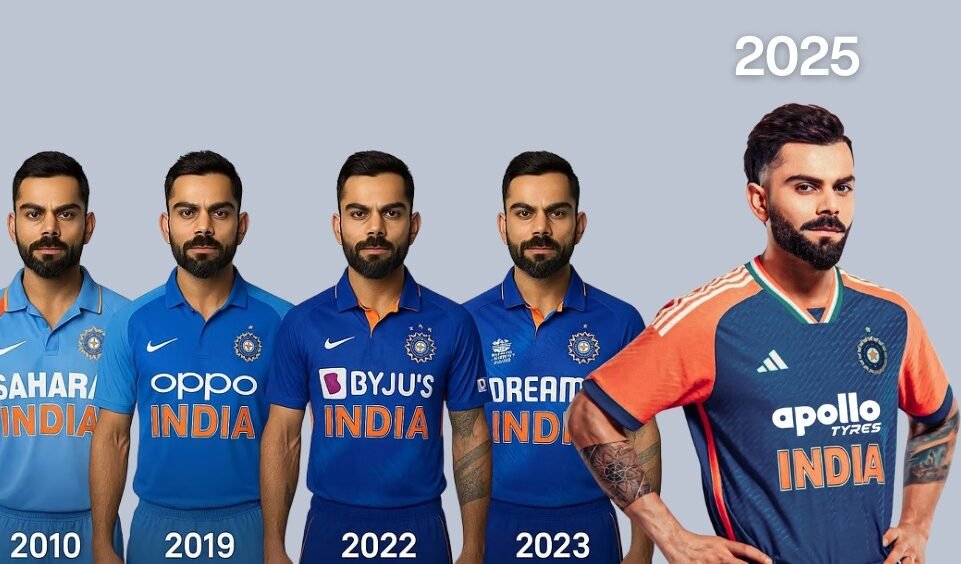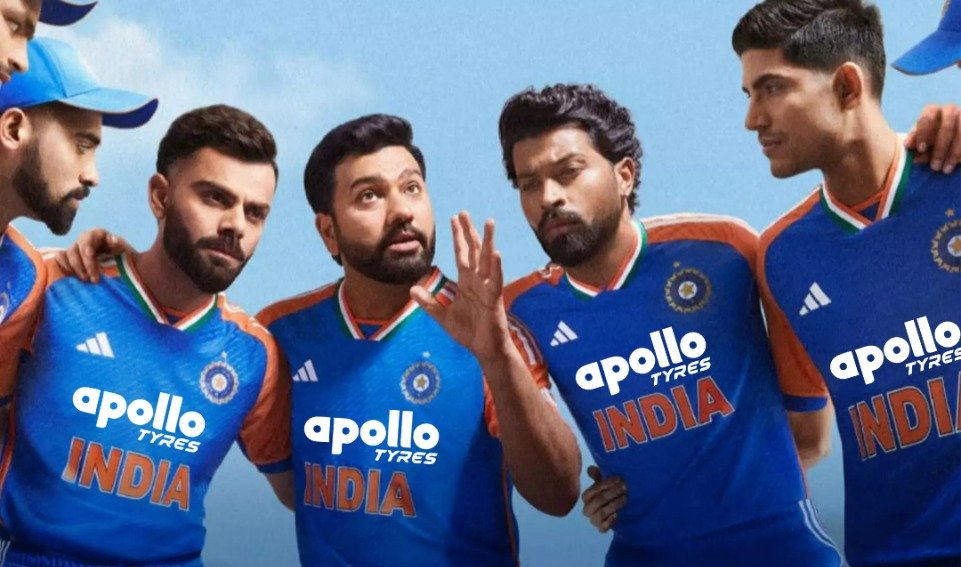India’s cricket jersey has a brand-new look! On 16th September, Apollo Tyres was announced as the new official jersey sponsor, also the lead sponsor for Team India in both men’s and women’s International cricket, across all formats. The tyre giant will now feature on the men’s, women’s and U-19 teams’ jerseys until March 2028.
This change is due to the exit of Dream 11, the previous sponsor, because of the Online Gaming Bill 2025, passed by the Indian government. This bill has impacted many real-money online gaming platforms, and the end of this 2-year-long sponsorship deal.
What is the Deal between Apollo Tyres and BCCI?
| Feature | Details |
| Value of the Deal | Approx. ₹579.06 crore for the sponsorship rights |
| Per-match Price | For Bilateral matches: approx. ₹4.5 crore per match For ICC matches: approx. ₹1.72 crores per match |
| Duration | Until March 2028 |
| Number of Matches | Around 130 fixtures (121 bilateral + 20 ICC matches) over the period. |
| Debut | During Team India’s upcoming home series this season |
Who is Apollo Tyres?
Apollo Tyres is a big name in the tyre manufacturing industry. With operations in over 100 countries, it has a global presence. It has long-standing partnerships in sports, especially football (including Manchester United, and teams in Indian Super League), motorsports events, and now, finally India’s biggest sport- cricket.
Who were the Other Bidders?
The bidding war for rights to jersey sponsorship was intense. Here’s who all were outbid by Apollo Tyres-
- Canva: coming close with a bid near ₹554 crore, it was the second-highest offer
- JK Cement: offered about ₹478 crores
Other interested names were reported to be large FMCG and telecom players, but Apollo Tyres bid sealed the deal, making it the new title on the jerseys of your favourite cricket players.
A Look at India’s Previous Sponsors
Before Apollo Tyres, Dream 11 held the lead-sponsor role spot prior to its exit amidst the regulations on online gaming and betting apps, right after BYJU’S ended its sponsorship deal early.
- Dream 11 (2023-2025): The fantasy sports gaming platform had paid approximately ₹358 crores, with approx 4 crores per match, but the regulations on real-money gaming made it step down.
- BYJU’S (2019-2023): The educational platform took over OPPO with a high-value deal with a tech-edu partnership.
- OPPO (2017-2019): The smartphone brand had originally signed a 5-year deal with approximately ₹1,079 crores, but had to transfer the rights to BYJU’S after the merger.
This shows how competitive a spot on the Indian team jersey can be.
Why does this Sponsorship matter?
- For Apollo Tyres: Having your name on the chest of our favourite players can give a global visibility push, while linking the brand with the passion and performance of Indian cricket.
- For Team India/BCCI: It reflects the growing commercial value of cricket, that even despite due to setbacks from regulations and real-money gaming, the sport is still a major platform and there will always be intense competition to be “on the jersey.”
What about Dream 11?
Though it’s not a jersey sponsor anymore, Dream 11 is still a key partner with tie-ups and linking to Indian cricket. However, BCCI has strictly excluded brands involved in real money gaming, betting, crypto, tobacco, etc. This is to ensure that all sponsors align with the government regulations and the public’s sentiments.
Bottom Line
From OPPO to BYJU’S to Dream 11 and now, Apollo Tyres, each sponsor has reached millions of fans through the jerseys of Indian players. We’re looking forward to a fruitful partnership with Apollo Tyres at the front and centre.
FAQs
Is Apollo Tyres an Indian company?
Yes, Apollo Tyres is an Indian multinational tyre company.
Who does Apollo Tyres sponsor for football?
Apollo Tyres sponsors football clubs like Manchester United and some teams in the Indian Super League.
Who is the sponsor of Indian cricket team killer?
The main sponsor of the Indian cricket team was Dream 11.
Why is Nike not sponsoring the Indian cricket team?
Nike’s contract ended and they chose not to renew it due to cost and strategy changes.




